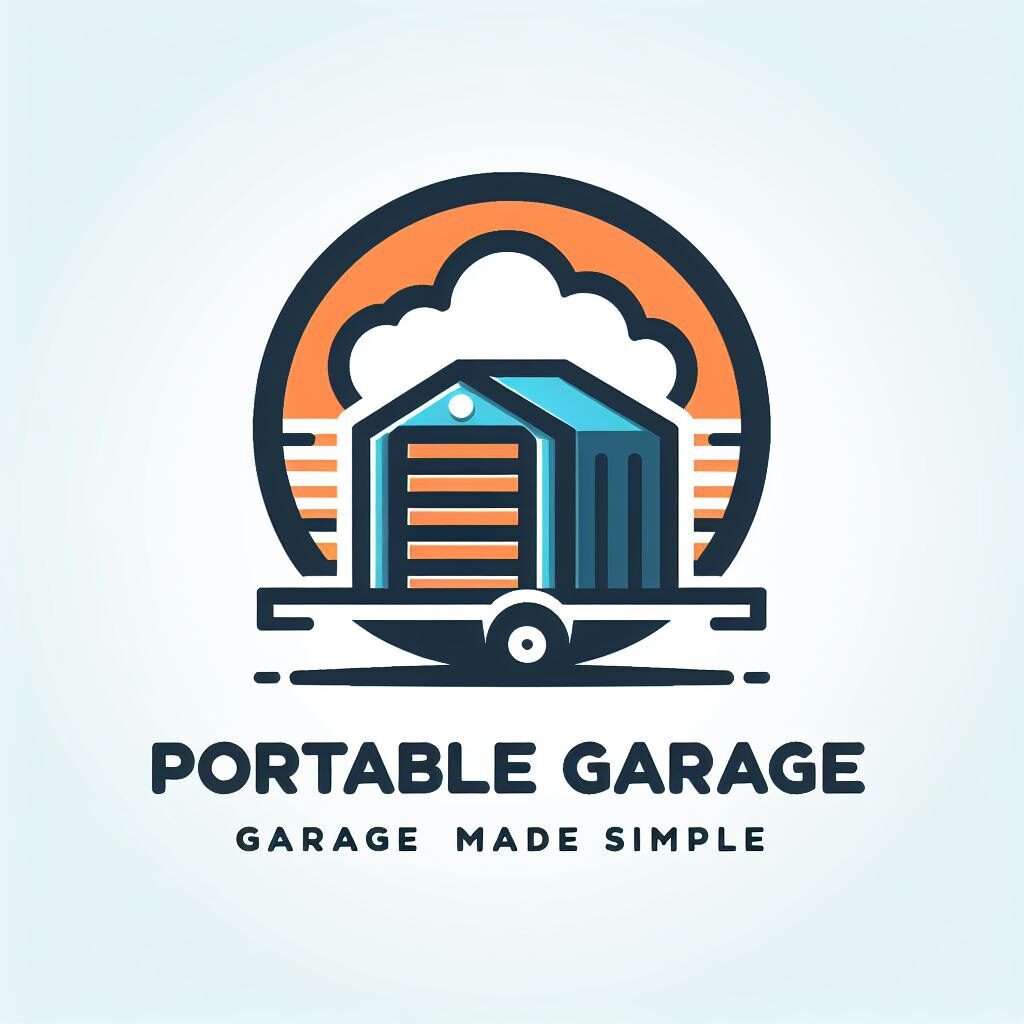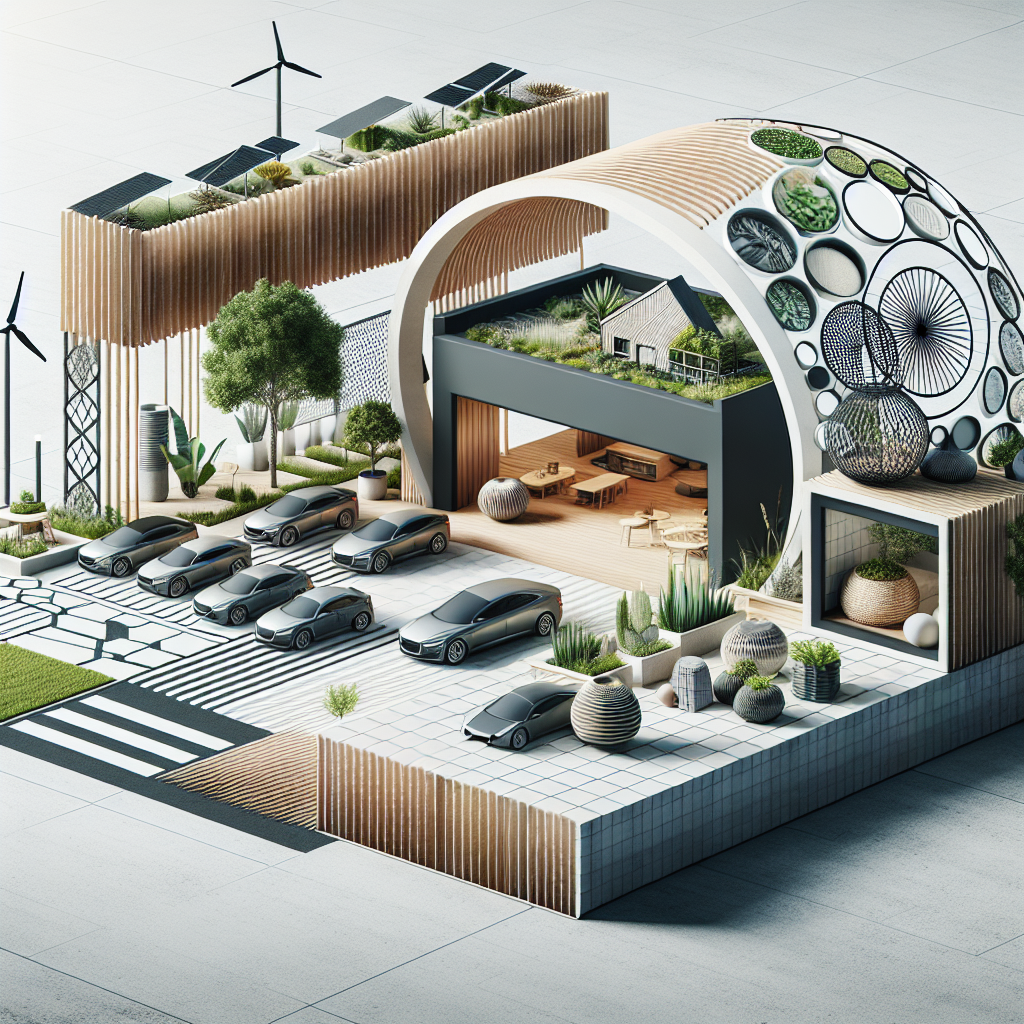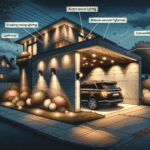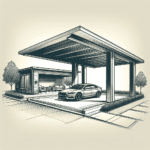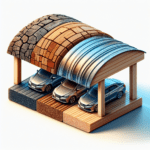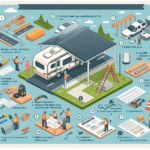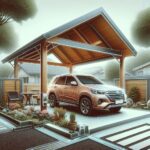Imagine having a carport that not only provides protection for your vehicle but also enhances the aesthetic appeal of your home. In this article, we will explore the world of carport ideas, where form and function intertwine to create a practical yet visually pleasing space for your car. From sleek and modern designs to rustic and charming structures, there are countless possibilities to transform your carport into an inviting extension of your home. With a harmonious balance between style and utility, discover how you can elevate your carport to new heights.
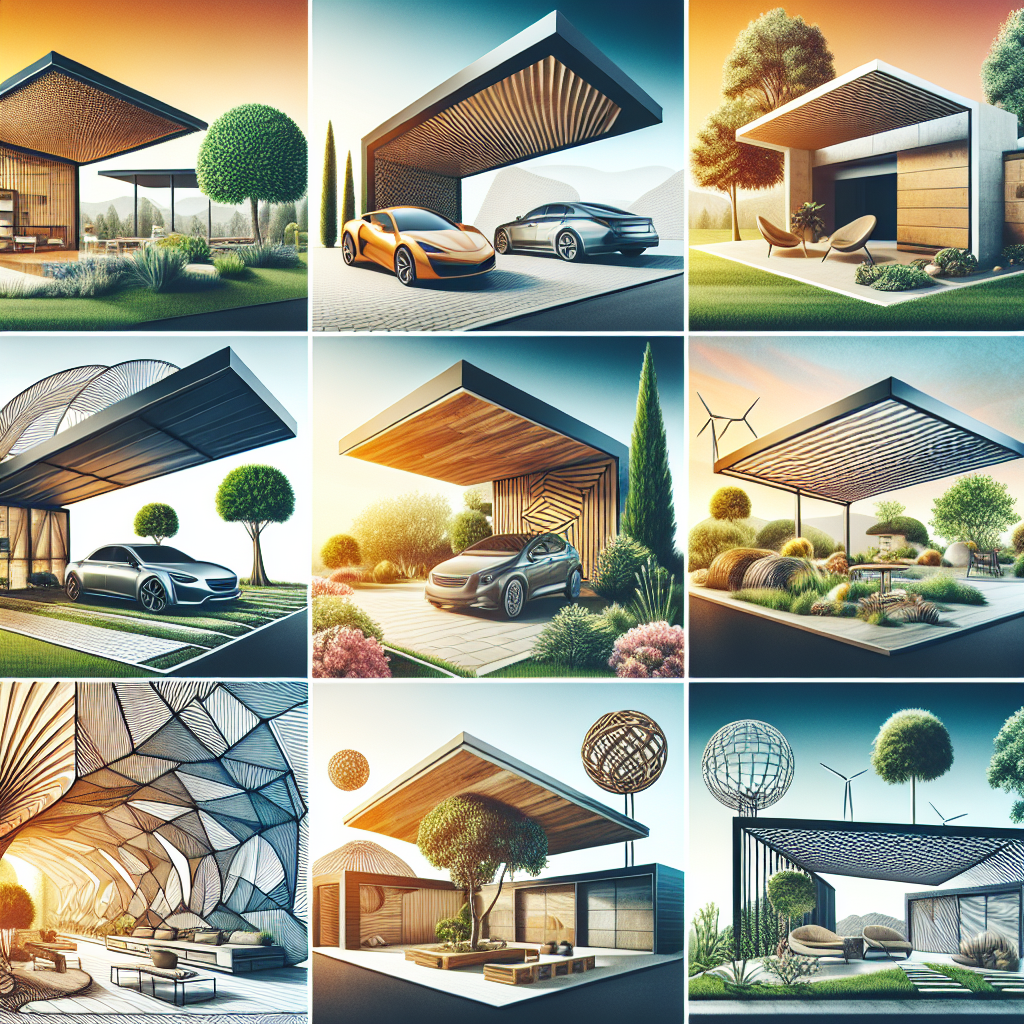
Design Considerations
When it comes to designing a carport, there are several important factors to consider that will ensure both form and function are balanced perfectly. From choosing a style and selecting materials to considering size and placement, each decision you make will contribute to creating the ideal carport for your needs.
Choosing a Style
The first step in designing your carport is to choose a style that matches your overall aesthetic and complements your home’s design. From modern and sleek to traditional and rustic, there are numerous styles to choose from. Consider the architectural style of your home and select a carport design that harmonizes with it, creating a cohesive and visually appealing outdoor space.
Selecting Materials
Choosing the right materials for your carport is crucial for ensuring its longevity and structural integrity. Opt for durable materials that are resistant to corrosion, UV rays, and other weather elements. Common options include steel, aluminum, and polycarbonate, each offering different benefits and aesthetic qualities. Consider factors such as maintenance requirements, cost, and durability when selecting the materials for your carport.
Considering Size and Placement
The size and placement of your carport will depend on various factors, such as the number of vehicles you need to shelter, available space on your property, and local regulations. Measure the size of your vehicles and ensure that the carport is wide enough and tall enough to accommodate them comfortably. Additionally, consider the location of the carport to maximize convenience and enhance the overall usability of the space.
Storage Solutions
Carports can offer more than just protection for your vehicles. By incorporating storage solutions into your carport design, you can maximize the functionality of the space and create an organized and clutter-free environment.
Creating Built-in Storage
Consider adding built-in storage features to your carport design, such as cabinets, shelves, or lockers. These can be used to store items such as gardening tools, sports equipment, and other outdoor essentials. Built-in storage not only helps keep your carport tidy but also provides easy access to frequently used items, making them readily available when you need them.
Utilizing Overhead Space
Make use of the often-overlooked space above your vehicles by installing overhead storage solutions. This can be achieved through the use of racks or shelves mounted on the walls or ceiling of the carport. Overhead storage is an excellent option for items that are not frequently used but still need to be easily accessible. It also helps free up valuable floor space, allowing for better organization and maneuverability within the carport.
Incorporating Shelves and Cabinets
In addition to built-in storage and overhead options, consider incorporating shelves and cabinets into your carport design. This provides additional storage space for items of varying sizes and can be customized to suit your specific storage needs. Shelves and cabinets can be installed along walls or mounted onto sturdy poles or support structures, maximizing vertical space and allowing for efficient organization of your belongings.
Outdoor Living Spaces
A carport doesn’t have to be solely for the purpose of storing vehicles; it can also serve as an extension of your living space. By incorporating various elements, you can transform your carport into a functional and inviting outdoor area.
Adding a Lounge Area
Create a relaxing lounge area within your carport by adding comfortable seating, such as outdoor sofas, chairs, or hammocks. Consider incorporating shade solutions, such as retractable awnings or shade sails, to provide protection from the sun and create a comfortable environment. Add some outdoor cushions, pillows, and blankets to enhance coziness and make the space an inviting place to unwind and enjoy your outdoor surroundings.
Incorporating a Dining Space
For those who love outdoor entertaining, consider incorporating a dining space within your carport. Install a stylish outdoor dining set, complete with a table and chairs, that can withstand the elements. Consider adding a pergola or canopy for additional shade and ambiance. You can also enhance the dining experience by incorporating lighting fixtures, such as string lights or lanterns, to create a warm and inviting atmosphere during evening gatherings.
Creating an Outdoor Kitchen
Take your outdoor living space to the next level by incorporating an outdoor kitchen into your carport design. Installing a grill, a countertop, and a sink can create a functional cooking area that allows you to prepare and enjoy meals outdoors. Consider adding additional amenities such as a mini-fridge, a built-in bar, or even a pizza oven to enhance the versatility and enjoyment of your outdoor kitchen. Decorate the space with potted plants, hanging baskets, or herbs to add a touch of greenery and freshness to the area.
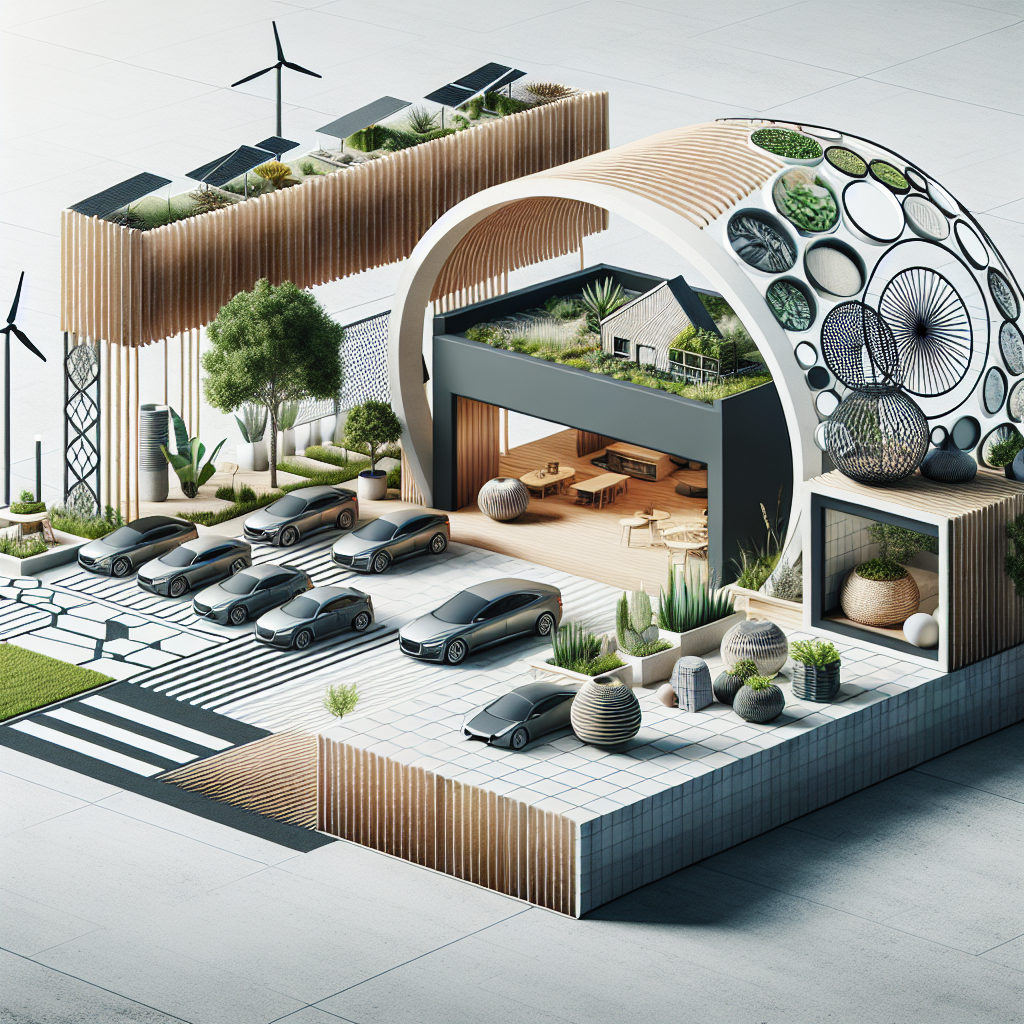
Green Roof Options
If you’re looking to incorporate sustainability into your carport design, there are various green roof options available that can provide both environmental benefits and aesthetic appeal.
Installing a Rooftop Garden
One eco-friendly option is to install a rooftop garden on your carport. This involves covering the roof surface with soil and planting a variety of vegetation, such as grasses, flowers, or even small shrubs. A rooftop garden adds beauty to your carport, helps reduce stormwater runoff, improves air quality, and provides insulation, thereby reducing energy consumption. Consider consulting with a professional landscaper or gardening expert to ensure proper installation and maintenance of your rooftop garden.
Opting for Solar Panels
Another green roof option is to install solar panels on the roof of your carport. Solar panels collect sunlight and convert it into usable energy, reducing your reliance on traditional power sources and lowering your carbon footprint. Not only do solar panels provide environmental benefits, but they can also save you money on your energy bills over time. Before installing solar panels, ensure that your carport receives adequate sunlight and consult with a solar energy professional to determine the best system for your needs.
Choosing Eco-friendly Materials
When selecting materials for your carport, consider choosing eco-friendly options that are sustainable and have minimal impact on the environment. For example, opt for recycled or reclaimed materials for the construction of the carport structure. Use eco-friendly paints or coatings that are low in volatile organic compounds (VOCs) to minimize air pollution. Additionally, consider using permeable paving materials for the carport floor, such as gravel or permeable concrete, to allow water to soak into the ground rather than contributing to runoff.
Enhancing Curb Appeal
A well-designed carport can significantly enhance the curb appeal of your home. By incorporating decorative elements, pergolas and trellises, and appropriate lighting, you can create a visually appealing and inviting entrance to your property.
Adding Decorative Elements
Enhance the visual appeal of your carport by adding decorative elements that complement the design of your home. This can include features such as decorative trims, architectural details, or ornamental plants. Consider incorporating decorative brackets, corbels, or moldings to add a touch of elegance and charm to the carport structure. Additionally, you can enhance the aesthetics by painting the carport in colors that complement the existing color scheme of your home.
Using Pergolas and Trellises
One effective way to enhance the appearance of your carport is by incorporating pergolas and trellises. These structures not only provide shade but also add visual interest and architectural detail to your carport. Consider growing climbing plants, such as vines or flowers, on the trellises to create a lush and vibrant space. Pergolas and trellises can also be used to define different zones within the carport, such as a seating area or an outdoor kitchen, providing a sense of privacy and coziness.
Incorporating Lighting
Proper lighting can significantly enhance the curb appeal of your carport, as well as improve safety and security. Consider installing a combination of ambient lighting, task lighting, and accent lighting to create a well-lit and inviting space. For ambient lighting, use fixtures such as wall-mounted lanterns or overhead pendant lights. Task lighting can be achieved through the installation of wall-mounted or under-cabinet lights, providing adequate illumination for specific activities. Finally, accent lighting, such as ground lights or uplights, can be used to highlight architectural features or plants, adding depth and visual interest to the carport.
Multi-Purpose Carports
If you’re looking to maximize the use of your carport, consider designing it with multiple purposes in mind. By creating a workshop, a play area, or a home office within your carport, you can utilize the space to its fullest potential.
Creating a Workshop
If you enjoy DIY projects or have a hobby that requires a dedicated workspace, consider transforming a portion of your carport into a workshop. Install sturdy workbenches, storage units, and pegboards to organize your tools and materials. Make sure to include proper lighting and ventilation to create a comfortable and functional workspace. Designate specific areas for different tasks, such as woodworking, painting, or metalworking, to ensure efficiency and organization within your workshop.
Designing a Play Area
If you have children or enjoy outdoor games and activities, consider designing a play area within your carport. Install swing sets, slides, or a small climbing wall to provide hours of entertainment for your little ones. You can also include game tables, such as ping pong or foosball, for family fun. Ensure that the play area is safe and secure, with appropriate surfacing and padding to prevent injuries. Consider adding seating or a picnic table nearby for comfortable supervision and relaxation.
Building a Home Office
For those who require a dedicated workspace for remote work or personal projects, consider converting a portion of your carport into a home office. Install a desk, ergonomic chair, and storage solutions to create a functional and comfortable workspace. Ensure that the area is well-lit and has proper insulation to create an environment conducive to productivity. Consider adding windows or skylights to maximize natural light and provide a pleasant working atmosphere. This multi-purpose use of your carport can provide the convenience of working from home while utilizing a separate space away from the distractions of the main house.
Personalizing Your Carport
Make your carport truly unique and reflective of your personal style by incorporating various personalization options. By using custom colors, incorporating branding and signage, and adding unique features, you can create a carport that stands out and reflects your individuality.
Using Custom Colors
One of the simplest ways to personalize your carport is by using custom colors. Paint the carport in colors that align with your personal preferences and match the overall theme of your property. Consider using multiple colors to create visual interest or incorporate unique patterns or designs to make your carport truly unique. Custom colors can help create a harmonious connection between your carport and the rest of your home, enhancing the overall visual appeal.
Incorporating Branding and Signage
If you own a business or simply want to make a statement, consider incorporating branding and signage into your carport design. Display your company logo, name, or slogan on the exterior walls or signage posts. This can help create a cohesive and professional look, especially if the carport is used as a commercial space. Additionally, signage can provide useful information, such as address numbers or directional signs, making it easier for visitors and delivery personnel to locate your home.
Adding Unique Features
To make your carport truly personalized, consider adding unique features that reflect your interests and hobbies. This can include installing decorative elements such as sculptures, wind chimes, or hanging plants. Consider incorporating an outdoor art installation or a mural that showcases your creativity and adds a touch of personality to your carport. Thoughtfully chosen unique features can transform your carport into a conversation starter and a reflection of your individual style.
Protection from the Elements
One of the primary functions of a carport is providing protection from the elements. By selecting weatherproof materials, adding windbreakers, and using curtains or screens, you can ensure that your carport offers optimal protection for your vehicles and belongings.
Installing Weatherproof Materials
To protect your carport from rain, snow, and other weather conditions, it’s essential to select materials that are weatherproof. Opt for roofing materials that are resistant to leaks and damage, such as metal or asphalt shingles. Additionally, ensure that all seams and joints are properly sealed to prevent water infiltration. Consider installing gutters and downspouts to divert rainwater away from the carport structure and the surrounding area. By selecting weatherproof materials, you can ensure that your carport remains durable and functional for years to come.
Adding Windbreakers
In regions prone to strong winds, it’s crucial to add windbreakers to your carport design. This can be achieved through the installation of solid walls or panels on one or more sides of the structure. Windbreakers act as a barrier, reducing the impact of strong winds on your vehicles and protecting them from potential damage. Consider using materials such as wooden panels, metal sheets, or polycarbonate panels that offer both durability and resistance to wind forces. Properly placed windbreakers can create a calm and sheltered space within your carport, providing an additional layer of protection.
Using Curtains or Screens
To further safeguard your carport from the elements and add privacy, consider using curtains or screens. These can be installed along the sides of the carport to create a barrier against wind, dust, and excessive sunlight. Curtains or screens made from weather-resistant fabrics or materials can provide temporary protection, allowing for increased flexibility in terms of privacy and ventilation. Additionally, curtains or screens can add a decorative touch to your carport, enhancing its overall visual appeal and creating a cozy and inviting atmosphere.
DIY vs. Professional Installation
When it comes to installing a carport, you have the option of tackling the project yourself or hiring professionals to do the job. Each approach has its advantages and considerations that should be taken into account.
Considering the Difficulty Level
Before deciding whether to embark on a DIY carport installation or hire professionals, consider the complexity of the project and your level of expertise. Carport installations can vary in difficulty, depending on the design, size, and materials involved. If you have experience with construction projects and feel confident in your abilities, a DIY approach may be feasible. However, if you lack the necessary skills, tools, or time, it may be more prudent to hire professionals to ensure a successful and efficient installation.
Factoring in Costs
Cost is an important consideration when deciding between DIY and professional installation. DIY projects can potentially save you money on labor costs, as you won’t be paying for professional services. However, it’s essential to factor in the cost of materials, permits, and any specialized tools or equipment that may be required for the installation. On the other hand, professional installation can provide peace of mind and ensure that the project is completed correctly and in a timely manner. Consider obtaining quotes from reputable contractors and weigh the costs against your budget and timeframe.
Evaluating Time and Skill
Consider the amount of time and skill required for the carport installation when deciding between DIY and professional options. DIY projects often require a significant investment of time, especially for those with limited experience in construction or carpentry. Additionally, complex projects may require specialized skills or knowledge that you may not possess. Hiring professionals can save you time and effort, as they have the expertise and equipment needed to complete the installation efficiently. Evaluate your available time, skill level, and comfort level with the project to make an informed decision that aligns with your capabilities.
Legal Considerations
Before embarking on a carport installation project, it’s essential to be aware of and comply with any legal requirements or regulations that may apply. Obtain the necessary permits and ensure that your carport design adheres to local building codes and zoning requirements.
Checking Local Building Codes
Different municipalities have varying building codes and regulations that dictate the construction and design specifications for carports. Research and familiarize yourself with your local building codes to ensure that your carport complies with the necessary guidelines. Consider factors such as setback requirements, maximum height allowances, and restrictions on materials or finishes. Failure to comply with building codes can result in fines, delays in construction, or even the need to dismantle and modify the carport.
Obtaining Permits
In many jurisdictions, obtaining permits is a prerequisite for constructing a carport. Permits ensure that the project meets safety standards and is in compliance with local regulations. Contact your local building department to determine the specific permits required for your carport installation. The application process typically involves submitting detailed plans or specifications, paying fees, and scheduling inspections at various stages of the project. Obtaining the necessary permits may entail additional costs and time, but it is essential to avoid potential legal issues or complications in the future.
Meeting Zoning Requirements
Apart from adhering to building codes, it’s crucial to ensure that your carport design meets the zoning requirements set by your local jurisdiction. Zoning regulations dictate how properties within a specific area can be used, including limitations on the size, height, and location of structures such as carports. Verify that your property’s zoning designation allows for the construction of a carport and determine any specific restrictions or conditions that may apply. Failure to comply with zoning requirements can result in costly fines, forced removal of the carport, or legal proceedings. Consult with your local zoning authority or a professional to ensure that your carport design meets all zoning regulations.
In conclusion, designing a carport involves making several important considerations to strike the perfect balance between form and function. From choosing a style and materials to considering size and placement, each decision plays a crucial role in creating a carport that meets your needs and enhances the overall aesthetics of your property. Additionally, incorporating storage solutions, outdoor living spaces, green roof options, and personalized features can maximize the utility and visual appeal of your carport. Ensuring protection from the elements, evaluating installation options, and complying with legal requirements are equally important factors to consider. By carefully considering each aspect of your carport design, you can create a space that is not only functional but also reflects your personal style and enhances the overall appeal of your property.
